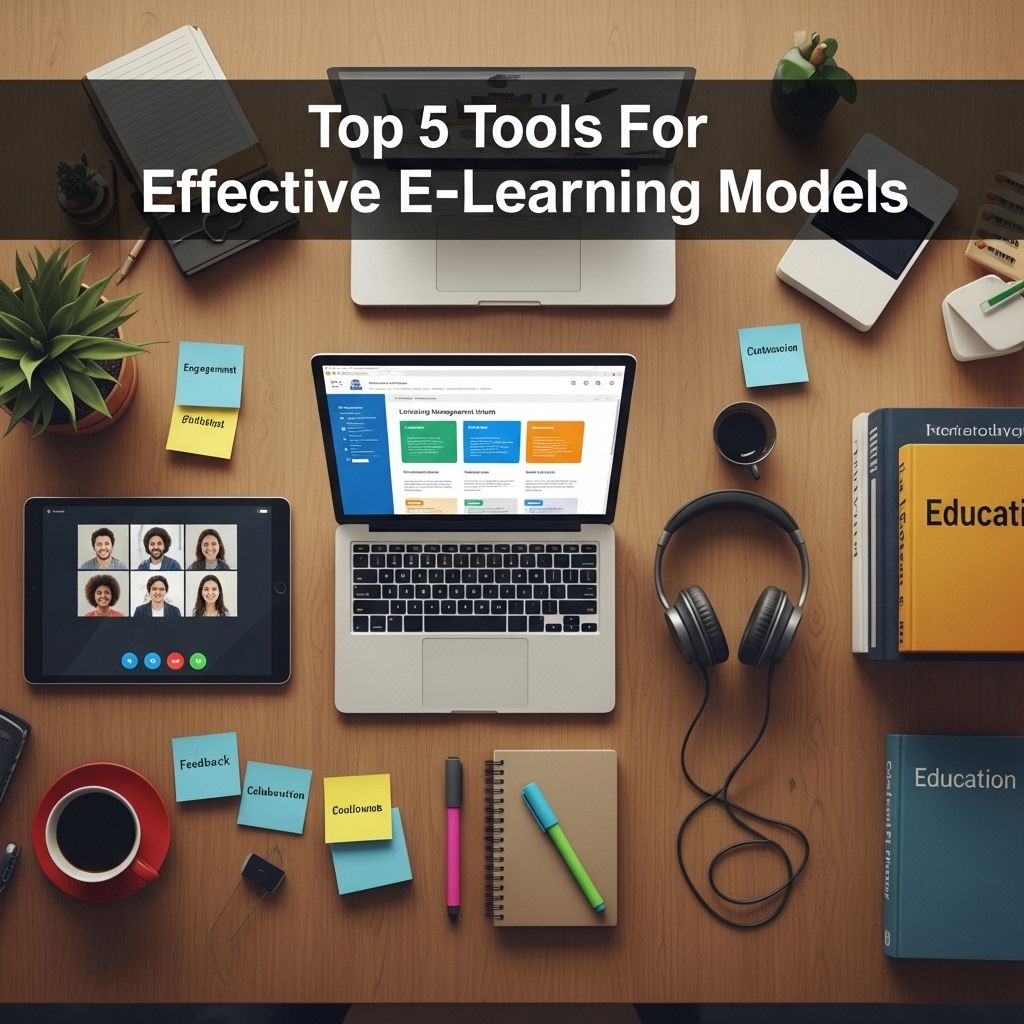In today’s fast-paced digital world, e-learning has emerged as a vital tool for education and professional development. The growth of online learning platforms and tools has revolutionized the way knowledge is shared and absorbed. With the increasing demand for effective e-learning models, various tools have been developed to enhance user engagement, improve understanding, and streamline the learning process. This article explores five of the most effective tools for creating and delivering high-quality e-learning experiences.
Table of Contents
1. Learning Management Systems (LMS)
Learning Management Systems are the backbone of e-learning infrastructures. They allow educators to create, manage, and deliver educational courses and training programs. A robust LMS offers features for tracking learner progress, providing assessments, and facilitating communication between instructors and students.
Key Features of a Good LMS
- User-friendly interface
- Analytics and reporting capabilities
- Mobile compatibility
- Customizable course templates
- Integration with other tools
Some popular LMS options include:
- Canvas
- Moodle
- Blackboard
- TalentLMS
- Teachable
2. Authoring Tools
Authoring tools enable educators and instructional designers to create interactive and engaging content for learners. These tools allow for the development of multimedia-rich courses that can include videos, quizzes, simulations, and other interactive elements.
Top Authoring Tools
| Tool | Main Features |
|---|---|
| Articulate Storyline | Drag-and-drop interface, responsive design, and extensive interaction options |
| Adobe Captivate | Mobile-friendly content creation, video tutorials, and quiz features |
| iSpring Suite | PowerPoint integration, video lectures, and interactive assessments |
| Elucidat | Collaborative features, templates, and analytics tracking |
| Adapt Learning | Open-source and responsive learning experiences |
3. Virtual Conferencing Tools
With the rise of remote learning, virtual conferencing tools have become essential for conducting live classes, webinars, and workshops. These platforms facilitate real-time interaction between educators and learners, enhancing the overall learning experience.
Best Virtual Conferencing Tools
- Zoom
- Microsoft Teams
- Google Meet
- Webex
- BlueJeans
When selecting a virtual conferencing tool, consider features such as screen sharing, breakout rooms, recording capabilities, and integration with other platforms.
4. Gamification Platforms
Gamification is an innovative approach to e-learning that applies game design elements to enhance learner motivation and engagement. By incorporating challenges, rewards, and competition into the learning process, gamification can transform a traditional learning environment into a dynamic and interactive experience.
Examples of Gamification Tools
- Kahoot! – An interactive quiz platform that allows educators to create fun and engaging assessments.
- Classcraft – A role-playing game that enables students to earn points and rewards for positive behaviors and academic achievements.
- Quizizz – A gamified assessment tool that allows students to learn and compete in real-time.
5. Feedback and Assessment Tools
Effective e-learning models rely heavily on continuous feedback and assessment to evaluate learner progress and efficacy. Various tools facilitate the collection of feedback through surveys, quizzes, and assessments, helping educators understand learner needs and improve course content.
Notable Feedback Tools
- Google Forms – A versatile tool for creating surveys and quizzes.
- SurveyMonkey – A popular platform for collecting detailed feedback from learners.
- Typeform – A user-friendly tool for creating interactive and visually appealing surveys.
Assessment Tools
Assessment tools can help educators gauge the effectiveness of their content and the knowledge gained by learners. Consider using:
- ProProfs Quiz Maker – A comprehensive tool for creating quizzes and assessments.
- Gradebook – A tool for tracking student performance and progress.
- Formative – A real-time assessment tool that allows educators to monitor student understanding.
Conclusion
As e-learning continues to evolve, leveraging the right tools is essential for creating effective and engaging learning experiences. From powerful LMS platforms to interactive authoring tools and feedback mechanisms, incorporating these technologies can significantly enhance the e-learning process. By staying informed about the latest trends and tools, educators can ensure they provide high-quality educational experiences that cater to the needs of today’s tech-savvy learners.
FAQ
What are the top tools for creating effective e-learning models?
The top tools for creating effective e-learning models include Learning Management Systems (LMS) like Moodle, authoring tools like Articulate Storyline, video conferencing tools like Zoom, interactive content creators like H5P, and assessment platforms like Quizlet.
How can Learning Management Systems enhance e-learning?
Learning Management Systems enhance e-learning by providing a centralized platform for course management, tracking learner progress, and facilitating communication between instructors and students.
What role does video conferencing play in e-learning?
Video conferencing plays a crucial role in e-learning by allowing real-time interaction between instructors and students, fostering collaboration, and enabling live discussions and workshops.
Why are interactive content creators important for e-learning?
Interactive content creators are important for e-learning because they engage learners through interactive simulations, quizzes, and multimedia, enhancing retention and understanding of the material.
How can assessment platforms improve e-learning outcomes?
Assessment platforms improve e-learning outcomes by providing tools for quizzes, feedback, and analytics, helping educators gauge student understanding and tailor their teaching strategies accordingly.


